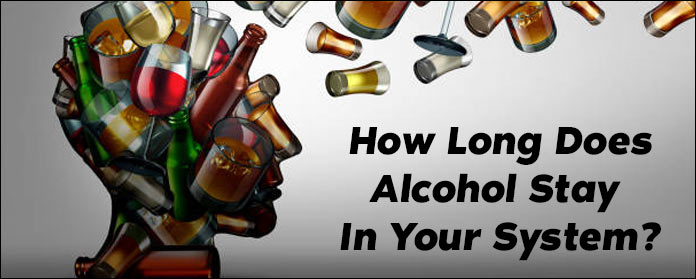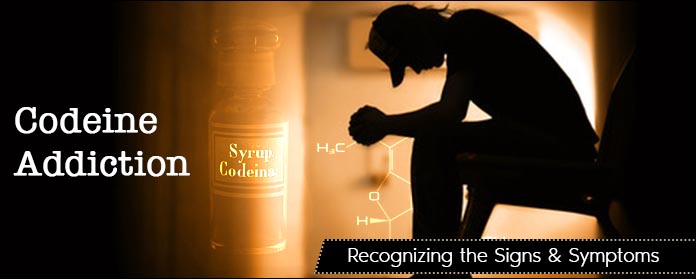The National Institute on Alcohol Abuse and Alcoholism reports 6.2% of adults in the United States have an alcohol use disorder. That percentage translates to 16.6 million people.
Alcohol contributes to 88,000 deaths each year in the United States. People with alcohol disorders die of liver failure, drunk driving, overdoses, and more.
31% of driving fatalities are a result of alcohol-impaired driving. These deaths are preventable.
Alcohol affects everyone in a unique way. But, you can figure out how your body metabolizes alcohol once it enters your bloodstream. Keep reading if you’ve ever wondered, “How long does alcohol stay in your system?”
We’re going to break down the facts in this guide. We’ll examine how alcohol affects your body and your decision-making ability.
How Does Your Body Process Alcohol?
Alcohol metabolizes faster than many other substances. A high percentage of what you drink gets metabolized by your body.
About 20% of the alcohol you consume enters your bloodstream from your stomach. The rest of the alcohol moves to the small intestine. Your small intestine has a large concentration of blood vessels. The remaining 80% of alcohol enters your bloodstream from the small intestine.
After the alcohol is in your bloodstream it moves throughout the body. Most of the alcohol moves to your liver where the majority of the metabolism happens. That’s why liver damage results from extensive use of alcohol.
Each person processes alcohol at a unique speed. Yet, it’s similar for most people. As a rule, most people process one drink per hour. A drink includes a beer, a glass of wine, or a single shot of liquor.
About 90-98% of all alcohol consumption gets metabolized and absorbed by the body. The rest gets eliminated through sweat, vomit, feces, and urine.
Measuring Alcohol in Your System
When you drink alcohol, it can affect your heart, liver, brain, and the rest of your body. The minute you take a drink, your body starts to metabolize it. An average-sized person metabolizes one serving per hour.
Alcohol gets metabolized at a constant rate. The Blood Alcohol Concentration shows how much of your bloodstream is pure alcohol. It varies from person to person.
Blood alcohol concentration measures the alcohol-related to the water in your blood. It’s the most common way to measure the amount of alcohol in a person’s system.
Blood Alcohol Content (BAC) reveals the percentage of pure alcohol in your blood. It’s a scientific method that tells how intoxicated someone is. A BAC of 0.1 means the blood is 0.1% pure alcohol. Most countries consider a BAC of 0.08 as legally intoxicated.
Here’s a rundown of what to expect along the BAC scale:
- Most people relax at .04
- Legal intoxication in most states at .08
- Nauseous at .12
- May Lose Consciousness at .30
- Most People Unconsciousness at .40
- Usually Fatal at .45
Consult a BAC chart to learn a healthy range for your situation. The charts differentiate between men and women.
How Long Does Alcohol Stay in Your System?
Two people can have the same blood alcohol level but have different blood alcohol concentrations. That’s because the length of time alcohol stays in your system depends on many factors. Here are a few important ones:
Type of Alcohol
Compare the alcohol content. Different alcohols have different levels. Higher alcohol content affects blood levels.
Age
Younger people tend to process alcohol faster than older people.
Gender
Men process alcohol in a different way than women.
Male bodies usually have more water than female bodies. This gives them a higher tolerance to alcohol. Also, women have less of an enzyme that breaks down alcohol in their stomachs.
Weight
Body weight doesn’t affect the speed of processing. But, it does influence the blood alcohol content level.
Recent Food Consumption
Food in the stomach slows the absorption and processing of alcohol. It lowers the BAC.
Health
People who are healthy seem to process alcohol faster. Liver health plays a big role here. People with liver damage have a hard time processing alcohol.
Alcohol Tolerance
People with more fatty tissue don’t absorb alcohol the same way people with more muscle tissue do. Those with more body fat usually have higher blood alcohol content.
Rate of Metabolism
Genetics can play a role in whether a person processes alcohol fast or slow.
Amount Consumed
Binge drinking or steady drinking will influence blood alcohol levels.
The type of mixers used can affect absorption. For example, caffeinated drinks speed alcohol absorption. Fruit juices and water slow it down.
Medications or Drugs
Some medications interact with alcohol. They can change how your body reacts to alcohol.
Always consult with your doctor before mixing a prescription and alcohol. You should never mix illegal drugs with alcohol.
Most often, alcohol stays in your blood for 24 hours, in your urine up to 80 hours, and in your hair follicles for 3 months. But as noted, each person is different.
The Definition of One Drink
It’s important to note how much alcohol is in your beverage. Look for the alcohol content, especially with different types of beer. A higher content means the drink will affect you more.
Every alcoholic beverage contains different amounts of pure alcohol. A 12-ounce beer can vary from 5% to 7% alcohol. A 5-ounce glass of wine has 12% alcohol.
Fortified wine contains distilled alcohol. A fortified glass of wine has 20% alcohol in a 5-ounce serving. Well-known examples of fortified wine are Madeira, port, vermouth, and sherry.
A shot of a distilled spirit like vodka, gin or rum, that’s 80 proof has 40% alcohol.
Bars standardized the size drinks. Each beverage has the same amount of pure alcohol. It helps the bartender track how much alcohol you’ve had.
Some specialty drinks, like pre-mixed or malt-based drinks, are different. Their alcohol content can range from 2.5% to 20%. Check the bottle to be sure.
How Long to Sober Up?
You can consult the BAC chart to determine how much alcohol makes a person legally drunk. But, how do you know how long it takes for you to sober up?
As discussed, alcohol metabolization starts in the stomach. When it reaches the small intestine, it’s absorbed into your bloodstream.
Your liver breaks down most of it. The rest is distributed to other parts of your body or expelled.
It isn’t easy to track your blood alcohol. You have to pay attention to the type and amounts of alcohol you consume.
Don’t let rumors fool you about fast ways to sober up and clear your head. The truth is that alcohol stays in your bloodstream a lot longer than most people think.
It doesn’t take much to trigger a positive result on an alcohol test. Think about that before you consider driving if you’re a little bit buzzed.
Understand how alcohol affects your body before you have a drink. It could save your life, and someone else’s.
Alcohol Testing
You may need to take an alcohol test as part of a police investigation. Alcohol testing occurs if you’re on probation or in a treatment program. There are different kinds of tests. The type of test depends on the situation.
If a medical doctor performs the test, it’s often done with a blood sample. In a situation like a traffic accident or suspicion of driving under the influence (DUI), it may be a breath test.
Alcohol gets measured through blood, saliva, sweat, urine, breath and hair follicles. Despite the method, most alcohol tests search for the chemicals ethanol or EtG.
Calculate How Long Alcohol Will Stay In Your System

Ethanol Urine Test
Ethanol is beverage alcohol. The 2-8% that isn’t metabolized in the liver leaves the body via urine, sweat, and breath.
Alcohol stays in urine for 12-36 hours. It depends on the amount of alcohol consumed. Some advanced tests work up to 48-80 hours after the last drink.
Ethanol urine tests aren’t the most accurate. This is due to fact that alcohol in your urine lags behind the amount of alcohol in your blood. Another factor is that bacteria in the body creates ethanol.
People with diabetes or yeast infections may have enough ethanol in their bodies to create a false positive on an alcohol test. Urine tests left at room temperature are at risk for microorganisms fermenting glucose. This creates more alcohol.
To stop inaccurate urine test readings ask for a second urine sample 30 minutes after the first one. Compare the tests to determine how long alcohol was in the bladder.
Ethyl Glucuronide (EtG) Tests
When your liver metabolizes alcohol it creates EtG. An EtG test is used if the time you drank doesn’t matter.
For example, someone who must show they haven’t had anything to drink. EtG stays in the body a lot longer than ethanol.
The EtG test can detect a positive use of alcohol up to five days later. It depends on the amount and type of alcohol the person drank. But, EtG tests detected one beer 16 hours later.
The test registered a positive 54 hours after someone drank six shots of vodka in a three-hour timeframe.
As you can see, EtG tests are more accurate than other tests. Yet, they aren’t good for situations where the time of the drink is important.
EtG tests aren’t good for DUI suspects. The test can register a positive long after the person isn’t intoxicated. The false positive could come from a drink ingested over 24 hours before the suspected DUI.
Breathalyzer Tests
A breathalyzer test is for time-sensitive situations. It detects alcohol in the blood within the past 24 hours.
A police officer who stops you on suspicion of driving drunk will use a breathalyzer test. You breathe into the device so it can detect traces of ethanol in your breath.
The device estimates your blood alcohol content based on the ethanol levels. If your reading is at or above .08 there is cause to arrest you for drunk driving.
Want to refuse to take a breathalyzer test? Think twice.
Refusal can have severe consequences in some states. In some cases, you get a license suspension of 90 days to a year. You could be prosecuted and receive fines, jail time or community service as a result.
You may have heard that sucking on a penny or a mint can change your breathalyzer results. According to research on SNOPES, you can’t trick a breathalyzer.
Saliva Tests
Alcohol consumption shows in saliva for about 12-24 hours it’s ingested. After 24 hours, the alcohol gets metabolized. It’s not detectable in saliva.
Saliva tests use a swab to remove saliva from the mouth. The swab goes to a lab for testing. A swab test is for alcohol, cocaine, marijuana, etc.
Another way to test saliva is with a stand-alone kit. These kits are like pregnancy tests and you can find them in your local pharmacy. The test gives instant results on an electronic display.
If you have a drink and test soon after, a swab test is very accurate. This makes swab tests popular with employers concerned about workplace accidents.
Hair Tests
Hair follicle tests detect alcohol up to three months after consumption. The test doesn’t show when the use occurred.
Instead, it indicates the average EtG level. It tells the average amount of alcohol consumption over the three month period.
One or two drinks won’t trigger a positive result because it isn’t enough alcohol to generate an EtG level in the hair. It also won’t show if someone is currently under the influence. It takes about five days for EtG to get into your hair.
What to Do When You Fail an Alcohol Test
If you fail an alcohol test it may indicate a larger problem. Whether testing for a new job or due to a legal problem, consider your situation.
Alcoholism often starts slow and grows into an all-consuming disorder. Many alcoholics hide their drinking. They struggle to pass alcohol tests and don’t ask for help.
Don’t let alcohol ruin your chance for employment. Don’t let it create larger problems with family, friends, and the law.
A failed alcohol test can signal the need for help. Learn more about alcohol detox programs and check out rehabilitation options.






